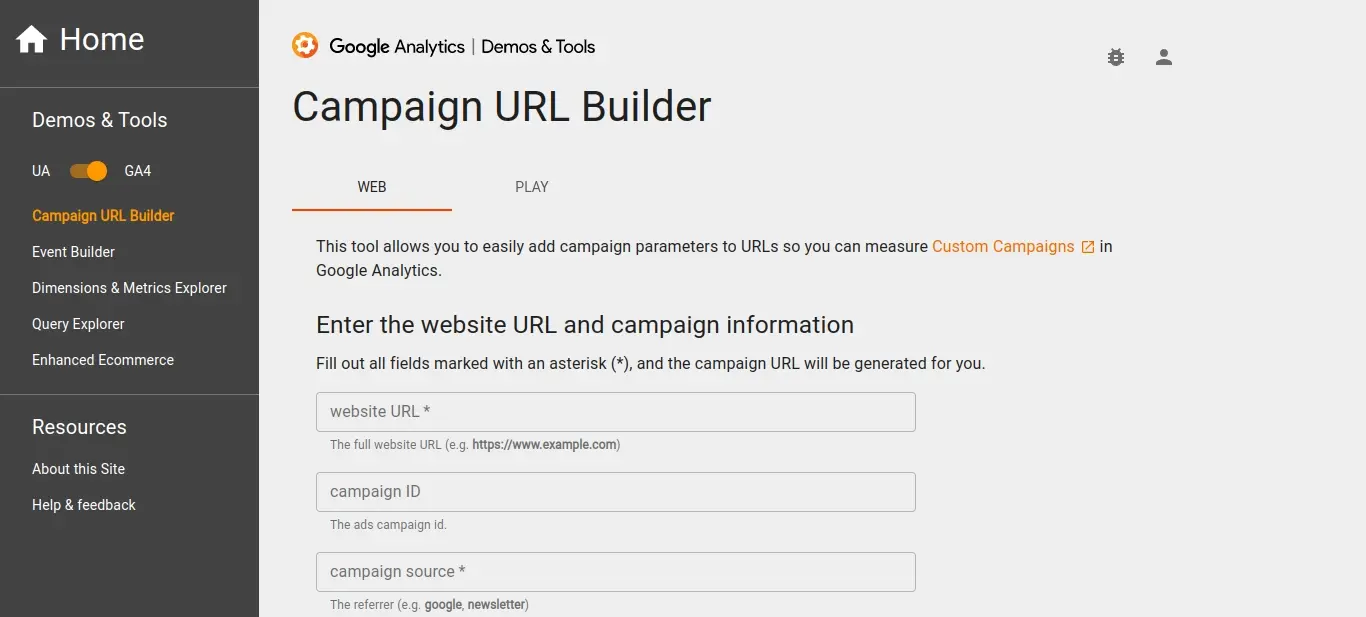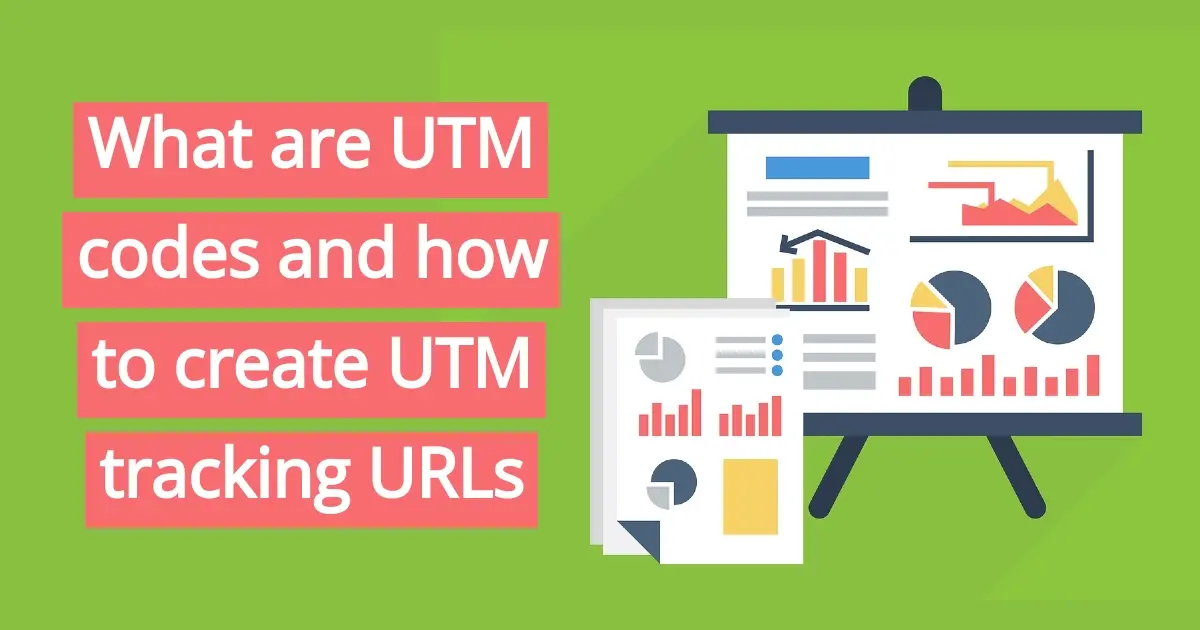If you’re into digital marketing and need to track the behavior of visitors from one place to whatever campaign web page you’re running, then you’ll want to think about using UTM codes.
You may have seen URLs around with some extra little code at the end. The UTM codes basically are small snippets of text at the end of a URL. A lot of times the UTM has a specific term which is used to identify what marketing campaign it is tracking. In this article you’ll learn more about UTM codes and how to create UTM tracking URLs.
Breaking Down 'UTMs': What Does It Mean
UTM code or UTM parameters stands for Urchin Tracking Module, which was a web analytics software developed by Urchin Software Corporation and bought by Google in 2005. UTM codes have been added as a handy tool for Google Analytics. Essentially, in Google Analytics, the UTM codes help measure how well or bad a marketing campaign turns out.
A UTM code is a series of parameters that are added to a custom URL, typically at the end of the URL after a question mark. These parameters include the following types:
- utm_source
- utm_medium
- utm_campaign
- utm_term
- utm_term
- utm_content
utm_source
The utm_source parameter identifies where the traffic came from, whether it’s a search engine, a specific website, or even from a social network website.
utm_medium
The utm_medium or Medium parameter identifies the medium through which the traffic went through, like a link in an email newsletter campaign, a social media post, or even a paid ad in the search engines.
utm_campaign
The utm_campaign parameter identifies whatever specific campaign is being tracked, for example a grand opening sale or a holiday deal.
utm_term
The utm_term parameter identifies whatever keyword or keyword phrase that the user clicked on that sent traffic to your site.
utm_content
The utm_content parameter identifies what specific piece of content that was clicked on that sent traffic to your site. A banner ad image, or a button, or a text link are examples of what can be used for utm_content.
How do UTM Codes Work?
When you add a UTM code to a link, add it to your site, an email, a social media post, or a paid ad, and one of your visitors clicks on it, the code is passed to Google Analytics.
Additionally, other information is passed to Google Analytics, like the user’s location, what browser or device they used, and their entire season. Through Google Analytics, this information is gathered and allows you to see where the traffic came from, and even things like what exactly the visitor clicked.
So, say you’re running a company that likes to create ads on Facebook or even Google Ads. These campaigns are to promote a sale or perhaps a brand-spanking new product. Your company would use a UTM code for each and every ad in the campaign.
For example, you might use utm_source=GoogleAds, utm_medium=Search, and utm_campaign=NewProduct as your parameters. During the campaign run, if a user clicks on any of the ads, the UTM code basically alerts Google Analytics and gathers data that someone clicked from Google Ads, through the search engine using the link for the new product.
How can UTM Codes be Used to Improve Marketing Campaigns?
UTM codes help improve marketing campaigns because they allow marketers to track how successful their promotions are while also allowing them to tweak their strategies based on data from previous campaigns. A marketer or business owner can analyze the data given by UTM codes, and figure out where the source of traffic came from, what was clicked on, and even which campaigns are doing better.
If you're running two or three campaigns that target different keywords, and all of them have separate UTM codes, you can compare which keyword is performing better. Through Google Analytics, you can gather enough data and determine what you need to do in order to improve each of your campaigns.
How to Create UTM Tracking URLs
An example of a UTM code looks something like:
http://yourdomain.com/your-page-name-here?utm_campaign=blog_post &utm_medium=social&utm_source=facebook
Here’s the breakdown of this URL and the UTM code, so you can understand what is going on. The utm starts at the question mark (?). The campaign is a blog post (utm_campaign=blog_post) that is shared in a social media post (utm_medium=social) on Facebook(utm_source=facebook). Each of the ampersands (&) in between tie each parameter together.
Here are the 4 steps on how to create a UTM tracking URL:
- Go to the Google Analytics Campaign Builder.
- Fill out the form.
- Copy the link you want to use for your campaign.
- Track your campaign.
1. Go to the Google Analytics Campaign Builder.

Go to the Google Analytics Campaign URL Builder. This will help put together the right UTM parameters for your campaigns.
2. Fill Out the Form.
The form has several fields you can fill out like:
- Website URL
- Campaign ID
- Campaign source
- Campaign medium
- Campaign name
- Campaign term
- Campaign content
Make sure to be specific and also keep your campaigns straight, especially if you are running a couple similar ones for one particular product or service. If you get confused, there’s a table at the bottom that explains all of the terms so you know what to put in each field.
3. Copy the Link You Want to Use for Your Campaign.
As you fill out the form, your URL with the UTM parameters will be automatically generated. That code will be the one that you copy and use wherever you intend to run the campaign from, whether it’s from a blog post, your newsletter, or even a social media post.
As a note, if you need the URL to be shorter, you can use a URL shortener service like Bitly.
4. Track Your Campaign.
To track your campaign, go to Google Analytics and navigate to Audience > Sources > Campaigns. As people click on your links or banners or buttons or posts, Google Analytics will gather the data that you can analyze how well your campaign is running. From there, you can tweak the campaign whether it be changing the source or a keyword.
In Summary
Does it sound like UTM codes might be something handy for your business? Hopefully this article on explaining what are UTM codes and how to create UTM tracking URLs is simple enough for you to try creating your own. When you use UTM codes and Google Analytics, you’re taking advantage of improving your marketing strategy. Good luck with your marketing campaigns!
Frequently Asked Questions
Can WordPress be used for eCommerce?
WordPress offers many different ways to build an eCommerce online store for all types of products and markets. Almost 40 percent of all online shops are powered by WooCommerce, a WordPress eCommerce plugin.
How customizable is my ecommerce store?
This depends on the eCommerce tool you use. For example, Magento is 100% customizable, and you can amend just about every aspect. Shopify on the other hand has far fewer customization options.
Is shared hosting good for eCommerce?
There are several advantages of using shared hosting for eCommerce, like its low cost, security, and user-friendliness. However, if you’re looking for a scalable hosting plan, managed cloud server might be a better choice for you.
Can I use hosting for WordPress for an ecommerce site?
Yes, of course. In fact, the platform has some of the best online stores and a range of payment processor plugins on the market.

Nile Flores is a long time professional blogger, as well as WordPress website designer and developer from the St. Louis Metro East. Nile blogs at NileFlores.com, where she’s passionate about helping website owners, whether they’re small business owners or bloggers. She teaches about Blogging, Social Media, Search Engine Optimization, Website Design, and WordPress. Additionally, Nile loves to speak at WordCamps (WordPress conferences) across the United States. When Nile isn’t knee-deep in coding, she’s a proud mom of a college student, and enjoys oil painting, cigar smoking, nail art design, and practicing traditional Okinawan kempo karate.
View all posts by Nile Flores



















